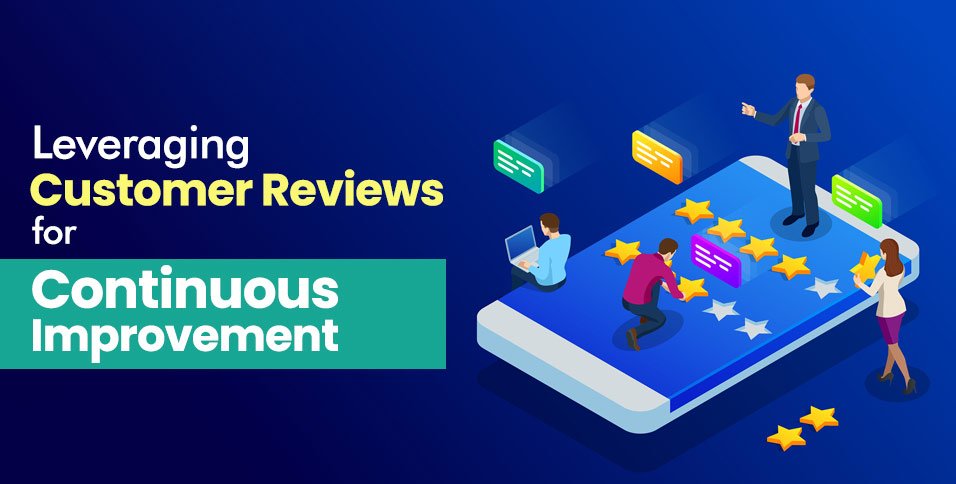In today’s rapidly changing market landscape, characterized by technological advancements and swift business decision-making, developing closer relationships with customers and gaining a deep understanding of their needs has become increasingly crucial for achieving business success. Companies are striving to adopt a customer-centric approach in their decision-making processes, ensuring that their customer base remains loyal, satisfied, and continues to expand. A key aspect of understanding customers involves direct customer service engagement, actively seeking insights on what is functioning well and areas that can be enhanced throughout the entire customer journey.
Although collecting and utilizing customer reviews may not be a complex task, many organizations struggle to execute it effectively. Research conducted by Gartner reveals that 75% of companies can directly attribute revenue growth to improvements in customer service. Customer satisfaction surveys, in particular, serve as a widely used and effective method for gathering feedback that can subsequently drive customer loyalty. However, in their eagerness to acquire the necessary information, businesses often overlook simple considerations that could have simplified the process and yielded better results.
1. Customer Service Participation Surveys
If there’s a significant delay in sending surveys after a customer touchpoint, both response rates and accuracy of the feedback tend to decline steeply. To mitigate this, it is advisable to integrate customer service surveys throughout the entire customer engagement journey whenever feasible, such as during events or within products. Moreover, it is essential to promptly follow up on new transactions and events within a day of their occurrence to capture insights while they are still fresh in the customer’s memory. By seamlessly incorporating survey questions into the workflow, organizations gain access to immediate feedback, enabling proactive actions to enhance customer corporate office complaints experiences.
Real-time insights not only expedite the understanding of the customer experience but also uncover innovative approaches for continuous improvement. Additionally, they help identify unexpected avenues to meet and exceed customer expectations.
2. Analyze Corporate Office Complaints for Resolution”
To gain a comprehensive understanding of customer experiences and derive actionable insights, it is essential to develop perspectives on customer behaviors, needs, and desires within specific cohorts or segments. It is crucial to be intentional in analyzing customer data and employ filtering questions strategically. Overlaying variables such as demographic information like geography, generational cohort, race, or gender with sentiment analysis, engagement metrics, or other key performance indicators can provide valuable context and depth. For example, identifying that most customer complaints originate from a particular region can guide decisions on staffing hours and coverage. Similarly, recognizing that a specific demographic faces challenges during onboarding can inform the development of a tailored in-product guided experience.
By incorporating this level of granularity, a more nuanced understanding of areas of success and areas requiring action can be achieved. This, in turn, facilitates the delivery of an enhanced customer experience, and promotes increased customer retention and positive customer reviews.
3. Share Customer Complaints in Your Organization
Fostering a culture of customer-centricity entails ensuring that all teams, ranging from product development to finance to engineering, possess a deep understanding of customers’ pain points, motivations, and sources of value. This understanding serves as a foundation for making informed decisions. Both data and customer quotes can be easily extracted or directly obtained from customer surveys, and they can offer immense value to teams that have limited direct customer interaction.
Whether shared during meetings, via company messaging channels, or as part of company events, customer complaints hold the potential to make a significant impact. Many companies have integrated public messaging channels with survey tools, enabling employees to access real-time feedback from customer satisfaction (CSAT) or Net Promoter Score (NPS) surveys and respond promptly.
Conclusion
As an entrepreneur, you understand the importance of delivering exceptional customer service, products, and services to attract and retain customers. However, ensuring consistent satisfaction requires a proactive approach. Customer reviews and complaints play a pivotal role in this endeavor, serving as valuable resources for refining your business operations. Actively collecting and analyzing feedback from your customers empowers you with insights into both successful areas and areas that need improvement. This feedback loop enables you to make informed decisions and take appropriate actions to continuously enhance customer satisfaction and refine your offerings.
We value your input; if you have any other ideas on leveraging customer reviews for continuous improvement, please share your thoughts below.
Also Read: 11 Reasons Why Customer Reviews Are Important in Marketing















